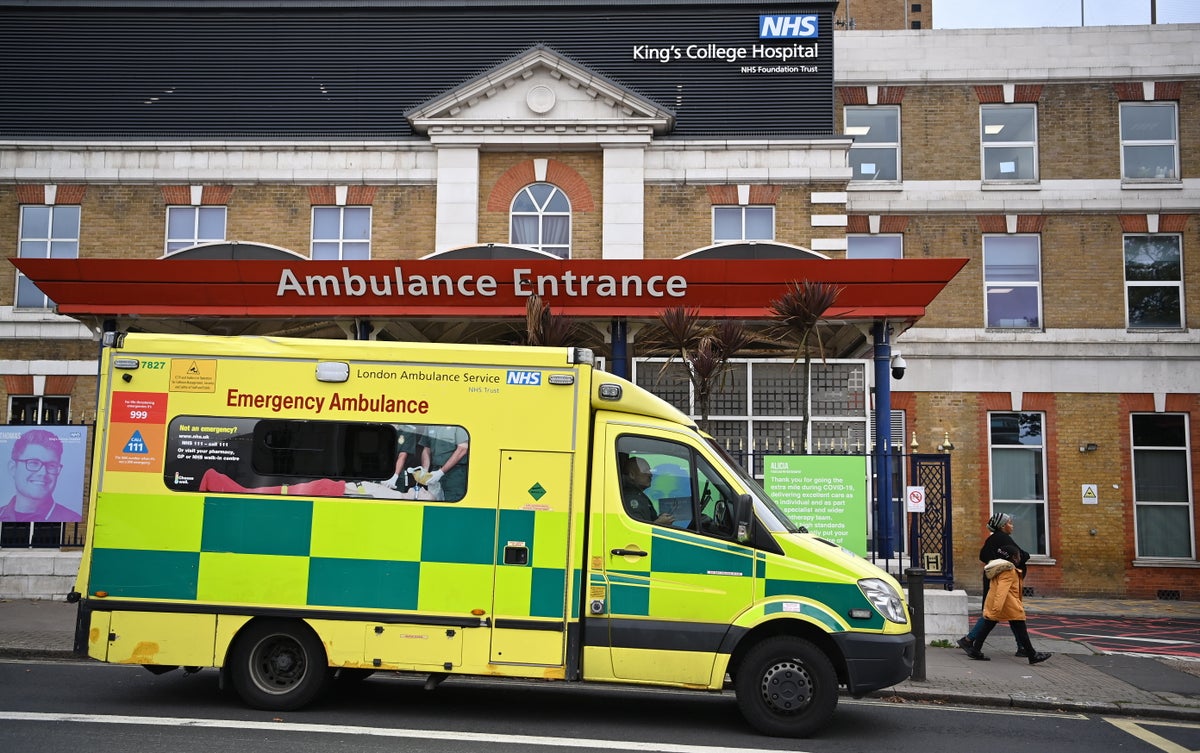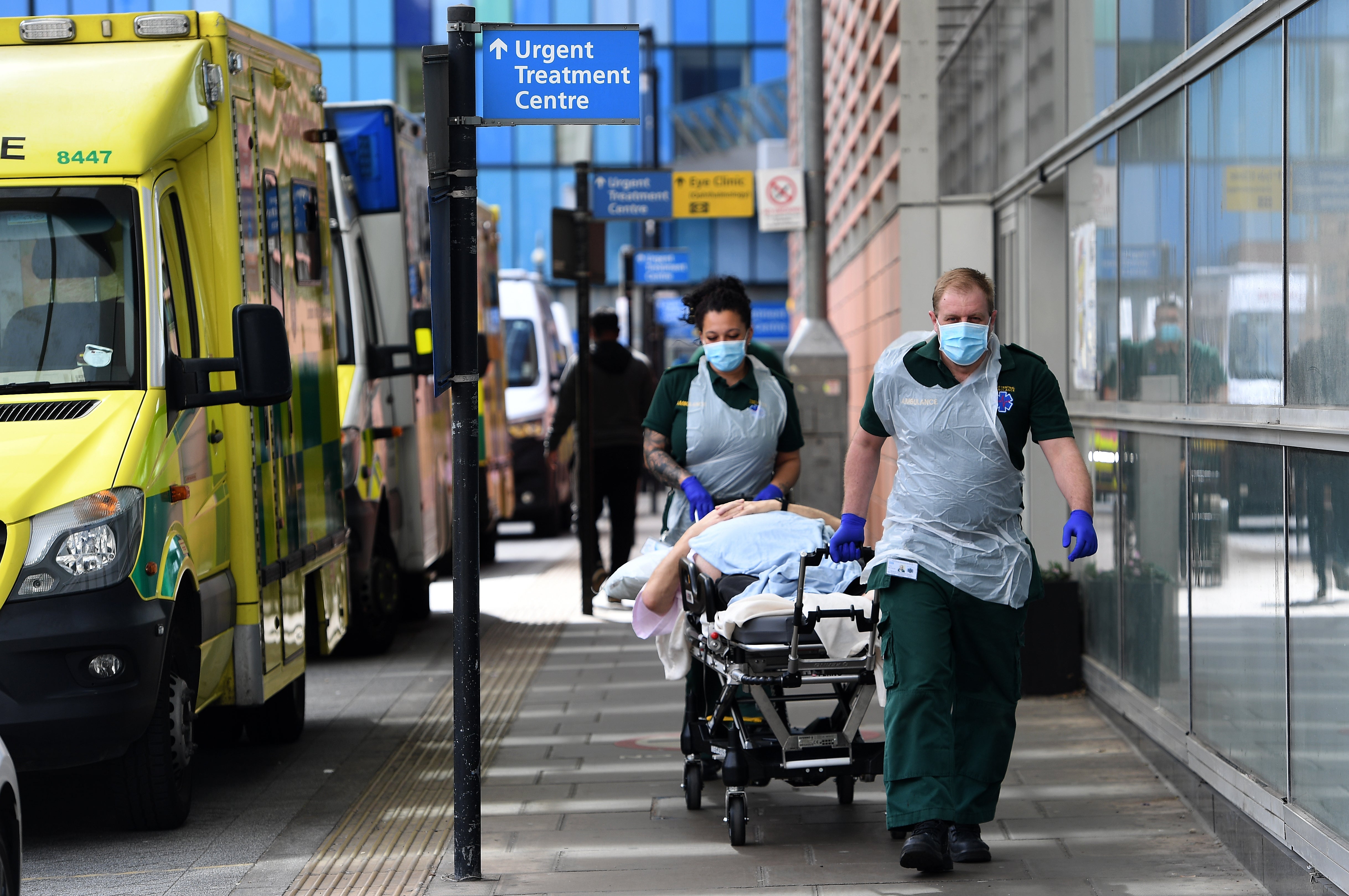
Patients across England have faced record A&E delays as almost one third of patients more than four hours to be seen, new data shows.
The number of patients seen within four hours in A&E dropped to 68.9 percent in November, the lowest since records began.
Meanwhile, the number of people waiting for NHS care hit a new high of 7.2 million in October, up from 7.1 million the previous month.
The figures come as NHS England sent a warning to healthcare leaders over the increased demand driven by Strep A concerns on Thursday.
Experts have warned the NHS is “bursting at the seems” with staff demoralised at the standards of care.
More than 50,000 NHS staff have been off sick every day since mid November, weekly figures show.
Have you been impacted by this story? Email rebecca.thomas@independent.co.uk
The figures come as the NHS is facing unprecedented strike action before Christmas from nurses, ambulance staff and other care workers.
Danielle Jefferies at think tank, The King’s Fund, said: “The latest figures show an NHS bursting at the seams as services head into winter struggling to meet sharply rising demand while keeping patients safe.
‘Improving ambulance delays has been a government priority for some time, but today’s numbers show that one in seven ambulances are delayed by more than an hour as they wait for stretched A&E teams to assess patients. Even after a patient’s condition has been deemed serious enough to warrant admission, 38,000 patients are stuck in A&E for over 12 hours because hospitals are too full to admit them.”
She explained problems in A&E and ambulance handover delays are driven by difficulties in discharging patients from hospital.
Data shows 13,300 patients were stuck in hospital last week, which is 30 per cent higher than last year.
Mr Jefferies added: “It is easy to become numb to dire NHS performance figures, but the health service really is facing the toughest pressures since modern records began. Industrial action is imminent, more than 50,000 NHS staff are off due to illness, cold weather is biting, and Covid-19, Strep A and other winter viruses will likely increase demand for services.”
As ambulance staff prepares to strike later this month the latest NHS data shows in November ambulances in England outside London took an average of 48 minutes and eight seconds to respond to emergency calls such as burns, epilepsy and strokes.
This is down from an average of one hour, one minute and 19 seconds in October, but still well above the target of 18 minutes.
Response times for urgent calls, such as late stages of labour, non-severe burns and diabetes, averaged two hours, 43 minutes and five seconds, down from three hours, 34 minutes and 34 seconds.

There have been some improvements to the NHS’ A&E performance, with the number of people waiting more than 12 hours in A&E departments from a decision to admit to actually being admitted showing a fall.
Some 37,837 people waited longer than 12 hours in November, down 14 per cent from the record 43,792 in October but still the second-highest monthly total in data going back to August 2010.
However, this data hides the larger number of people waiting for 12 hours after arriving in A&E which hit 183,000 in October, data seen by The Independent shows.
While the NHS waiting list hit a new high some improvements in waits for cancer patients were seen as the proportion of cancer patients in England who saw a specialist within two weeks of being referred urgently by their GP increased from a record low of 72.6 per cent in September to 77.8 per cent in October. However, this was still below the 93 per cent target.
Some 60.3 per cent of the 14,425 cancer patients who had their first treatment in October after an urgent referral by their GP had waited less than than two months - the second-lowest percentage on record and below the 85 per cent target.
Dr Susan Crossland, immediate past president of the Society for Acute Medicine, said in response to the figures: “We are in deeply troubling times and the fact that such shocking levels of performance are now commonplace is reflective of just how far the NHS has fallen.
“Standards are at all time lows for both patients and staff and it is demoralising for colleagues across the country and the UK as a whole who are working tirelessly against the tide to deliver a reasonable quality of care.”
The NHS’ national clinical director for rrgent and emergency care, NHS Professor Julian Redhead, said: “Despite the ongoing pressures on services which are exacerbated by flu hospitalisations, issues in social care meaning we cannot discharge patients who are ready, and record numbers needing A&E, staff have powered through to bring down some of our longest waits for care.”
He said the NHS is already facing a perfect storm of winter pressures but was implementing measures to reduce people’s chances of needing A&E, such as acute respiratory hubs.







